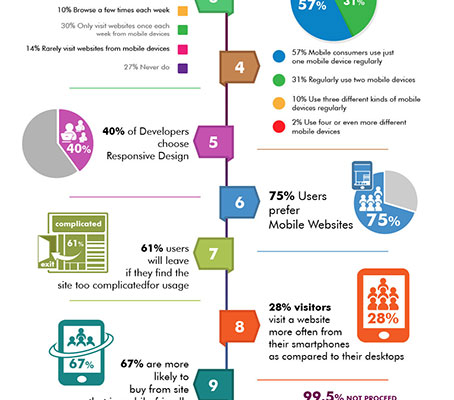Key Elements Of Website Style: Approaches For Creating An Easily Accessible User Experience
Key Elements Of Website Style: Approaches For Creating An Easily Accessible User Experience
Blog Article
navigate to this web-site -McKnight Thorpe
When it pertains to site design, making certain user-friendliness is crucial. From receptive layout to streamlined navigating, every element plays a crucial role in creating a site that caters to your target market's demands. However what regarding the finer information that can make or break an individual's searching experience? Stay tuned as we uncover some often-overlooked tips that can boost your site's use to the next degree, making it really stand out in the electronic landscape.
Significance of Responsive Layout
Receptive design is a critical aspect of contemporary web site development. Guaranteeing your internet site is receptive ways that it can adapt to various display sizes and devices, giving a smooth experience for customers.
With the enhancing use of mobile phones and tablet computers to access the net, having a responsive design is vital for reaching a larger target market. It aids in enhancing customer experience by making your website easy to browse and read on any type of device.
Additionally, receptive design can favorably influence your search engine positions, as internet search engine like Google focus on mobile-friendly websites. By having a receptive style, you're additionally future-proofing your web site, as brand-new devices with varying display sizes remain to arise.
Simplify Navigation Framework
To improve customer experience and promote easy access to details on your web site, improving the navigating structure is extremely important. When creating your website, concentrate on producing a clear and instinctive navigating food selection that assists site visitors locate what they're searching for promptly.
Restriction the variety of menu things to the basics, organizing associated web pages with each other to avoid overwhelming customers. Usage detailed labels that clearly show the material of each page, making it simpler for users to recognize where each link will take them.
Consider implementing dropdown menus for subcategories to avoid cluttering the major navigating bar. Additionally, include click over here on the web page for users who choose looking for specific info.
Focus on mobile responsiveness in your navigating design to make certain simple gain access to on all tools.
Maximize Page Tons Rate
Improving web page tons speed is vital for retaining site visitors on your internet site. Slow-loading web pages frustrate users and can result in high bounce rates. To maximize web page load rate, begin by optimizing photos. Compress photos without compromising top quality to lower their file sizes.
Furthermore, make it possible for internet browser caching to store regularly accessed resources in your area, accelerating load times for returning visitors. Minify CSS, JavaScript, and HTML data by eliminating unnecessary characters, comments, and format, improving tons speed.
Take into consideration using a content shipment network (CDN) to disperse your website's content across multiple servers worldwide, minimizing latency for customers accessing your website from various locations. Last but not least, restrict making use of third-party manuscripts and plugins, as they can dramatically impact tons times.
Verdict
In conclusion, by incorporating responsive style, streamlining navigating, and maximizing web page load speed, you can produce an user-friendly site that appeals to a larger target market and boosts customer experience. These essential elements guarantee that site visitors can conveniently accessibility and navigate your website throughout different tools, leading to increased engagement and complete satisfaction. By concentrating on these essential facets, you can develop an effective website that maintains users coming back for more.
